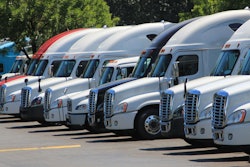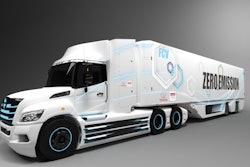Regardless of the price per gallon, fuel still is a major factor in a fleet’s total cost of operations. It is cheaper now, but it is not free. Cheap is not the same as free, which is why it is important for a fleet to manage fuel costs.
The best way to do that is by analyzing data related to fuel use, and the best place to get that data is from the vehicle’s telematics device or onboard computer. These options are more efficient and provide more information than fuel cards. Poor data quality can be an issue with fuel cards if odometer readings are not entered and the only data available is gallons pumped and miles driven. Telematics devices and onboard computers can provide additional data points on aggressive driving, idling, speeding, sudden starts and stops, etc. All these factors have an impact on fuel economy.
This data will help a fleet manager set up a good driver coaching program that can help avoid behavior that consumes fuel. Incentives can be offered for behavior changes that lead to better miles per gallon.
Fuel economy data also can help a fleet improve the asset procurement process, including vehicle specification and OEM selection. A fleet manager can change the specifications on a small number of trucks the fleet is planning to purchase, or even select a model from a different OEM. It can then monitor the fuel efficiency of those vehicles via the data from the telematics devices or onboard computers to see how each performs. This will allow the fleet to make better decisions about vehicle specs, set up its own best practices and achieve continuous improvement in the asset procurement process.
At 110,000 miles a year even with fuel as low as $2.70 per gallon, the fuel cost difference between a new 2020 model year truck getting 7.6 mpg and a 2016 model year truck getting 6.84 mpg is about $362 per month. That is $4,344 per year for one truck.
By tracking fuel economy with a telematics device or onboard computer the fleet will be able to spot fuel economy degradation. And while fuel economy is only one factor that goes into an asset replacement decision, it is an important one. The newer equipment may have other benefits like lower emissions, better technology and improved safety. All those costs, plus others – including maintenance and financing costs – can be factored into an equation that determines the impact the older asset and the newer one have on operational costs. This will help a fleet determine if the increased price of the new asset will be offset by increased efficiency, including better fuel economy.
No matter what fuel costs on a per-gallon basis, it still is a big piece of the operating cost of a vehicle. Managing fuel costs when fuel prices are low will put fleets ahead when fuel prices rise because they will have implemented good fuel management procedures.
Frank Bussone, CTP, is Vice President of Data Science and Analytics, Capital Equipment Solutions at Corcentric. He has more than 20 years’ experience in business analytics and business intelligence. In his role, Bussone works with the data associated with fleet operations in an effort to find efficient and lower cost solutions for truck fleets across the country. He earned his graduate degree from Florida Atlantic University. Bussone is a Certified Transportation Professional designated by the National Private Truck Council.












